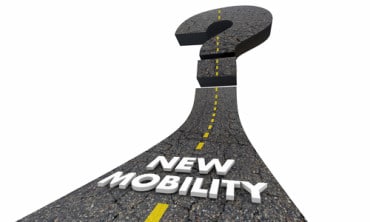
With an integrated platform approach, organizations can accelerate their digital transformation initiatives, and begin to work like the digitally enabled enterprises of tomorrow.
Robotic Process Automation (RPA) is a hot topic these days, and understandably, a point of interest in many digital transformation initiatives. In fact, the battle over which vendor’s RPA tool has the most gadgets and widgets has become somewhat of a proverbial “street fight.” But those focused at this tactical level can lose sight of the bigger picture: To truly get ahead with digital transformation initiatives and solve a wider set of business problems with automation, organizations are increasingly looking to a platform automation capability that allows them to optimize end-to-end operations.
See also: Maximizing Your Digital Transformation Experience
Though it may seem initially daunting to deploy a platform against end-to-end business operations, IT professionals can follow a three-step framework below to bring structure to their corporate initiatives for digital transformation.
Step 1: Understand where you are today
Digital transformation begins with evaluating business readiness from a technology and process perspective. IT plays an indispensable role in ensuring that transformation technologies like automation will fit within the larger IT framework. The IT group will also typically set guidelines for managing the technology environment and keeping it secure.
Parallel to engaging IT involvement, it’s important to engage more functional stakeholders throughout the business to assess how well-documented their processes are. Automation is most powerful when deployed against processes that are well-defined and already running properly; its ROI can be undermined when deployed against broken or undocumented processes. In other words, optimize first and then subsequently automate for the best results.
Step 2: Establish a business case for automation and adopt a ‘platform approach’ from day one
After conducting the ‘business readiness’ assessments above, it’s important to establish a business case that clearly draws connections between automation and corporate strategic, workforce, operational, and financial objectives. With such a business case, all use case candidates should be ranked based on their potential to yield the greatest returns to the business. An organization that does this work upfront is better able to determine which automation technologies are required to solve the unique business problems identified in the business case. To further explain, these problems may span improving the way information is captured and extracted to taking action on that information in downstream systems/applications.
After taking steps to align with respect to use cases that drive ROI, along with platform technologies required to automate them, an organization can transition into designing automation solutions within the platform. Such a group of technologies that automate end-to-end business processes drives significant value for an organization when bundled and integrated into a platform. These technologies include:
- Cognitive capture: Ingest/understand any document and extract relevant information via any channel.
- Process orchestration: Integrate people, automation technologies, systems, applications, etc. along a broader workflow in a business user intuitive manner.
- Mobility & engagement: Engage customers efficiently and effectively via the web or mobile devices.
- Advanced analytics: Provide data-driven insights with respect to outcomes as driven by automation.
- Artificial Intelligence: Automate complex decision-making and personalize service to end users.
An integrated platform approach saves employees from the need to learn multiple solutions and the procurement team from having to manage a myriad of vendor solutions. Thus, by adopting an integrated platform, IT professionals increase their organization’s ability to reduce costs, time-to-value, and complexity, while at the same time maximizing customer and employee satisfaction.
Analyst firm HFS recently called out the shortcomings of a ‘single technology’ approach to digital transformation and specifically used RPA as an example. They expressed support for an integrated approach: “RPA provides a terrific band-aid to fix current solutions; it helps to extend the life of legacy. But doesn’t provide long-term answers,” said analyst firm HFS. “Integrated Automation is how you transform your business and achieve an end-to-end Digital OneOffice.”
Step 3: Create a Center of Excellence
It’s important for organizations to create an operating model around automation that fits their business, otherwise known as a Center of Excellence for Intelligent Automation. A Center of Excellence team guides all things related to automation – including maintaining and overseeing standards across the business, training, vendor management, establishing best practices, and so much more. Organizations also have flexibility in how they structure their program. There are three main models:
- Centralized: A single team is responsible for running and controlling all aspects of the program.
- Decentralized: The responsibilities for running the automation program are replicated across separate business units within the company.
- Hybrid: Some aspects of the automation program are run by a single, centralized team, while others are replicated across business units.
There’s no ‘right’ or ‘wrong’ answer here; most important is to start with the model that makes the most sense given where an organization is today, and then adjust down the road as needed.
With an integrated platform approach, organizations can accelerate their digital transformation initiatives, and begin to work like the digitally enabled enterprises of tomorrow. Working like tomorrow leads to benefits such as improved productivity, faster decision-making, personalized service to customers, and a more empowered workforce.





























